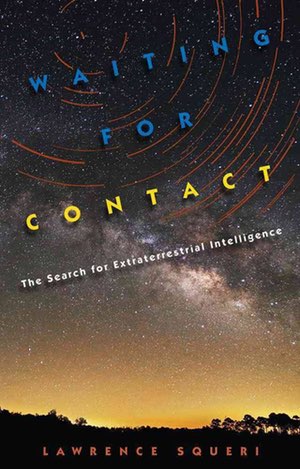Review: Waiting for Contactby Jeff Foust
|
| “We haven’t done much of a search,” Worden said of past SETI efforts. |
The continued operation of the Green Bank Observatory as an independent entity—with some, but reduced, NSF support—is made possible in part by a private initiative called Breakthrough Listen. The project, announced last year (see “A funding breakthrough for SETI”, The Space Review, August 17, 2015), plans to spend $100 million over ten years to fund efforts in the search for extraterrestrial intelligence (SETI), including about 20 percent of the observing time at Green Bank.
“The idea here was to revitalize the SETI search,” said Pete Worden, the former director of NASA’s Ames Research Center and current chairman of the Breakthrough Prize Foundation, in a talk September 29 at the International Astronautical Congress (IAC) in Mexico. The Breakthrough Listen effort is supporting searches at several telescopes, and Worden said the group is in discussions with several other observatories, including China’s new 500-meter telescope.
“We haven’t done much of a search,” he said of past SETI efforts, which he said were limited in the frequencies they observed or parts of the sky searched. “Based on this, we decided there’s a lot to do now.”
That SETI search, and the philosophy of scanning the skies to look for evidence of alien intelligence, is the subject of Waiting for Contact by Lawrence Squeri, a professor emeritus of history at East Stroudsburg State University. He offers a brief, and sometimes critical, examination of efforts since the mid 20th century to look for signals that might provide evidence that we’re not alone.
Much of the book covers familiar ground for those who know the basic about SETI. There’s the original Project Ozma by Frank Drake more than a half-century ago, the first dedicated effort for what is now known as SETI (a term, Squeri notes, only emerged in the 1970s.) He goes through some low-level NASA efforts that ended, infamously, in the early 1990s when Congress terminated funding, forcing SETI advocates to scavenge for funding in the private sector. One chapter examines SETI studies in the Soviet Union, primarily through the prism of conferences held there that brought together Soviet and American scientists.
Squeri attempts to determine a motivation for SETI: why should scientists spend time and money looking for signals, when it’s far from certain there’s any intelligence life beyond Earth? He argues that it is, in part, due to the progressive opinions of scientists, who believed that if any extraterrestrial civilizations existed, they could provide humanity with the secrets for surviving the growing pains of a technological society: SETI, after all, started at a time when society feared extinction in nuclear war or some kind of ecological catastrophe.
He also argues that SETI also served as a replacement of sorts for religion, as many of its leading advocates did not consider themselves members of a more conventional faith. “Although its astronomers do legitimate science, they are at the same time seeking answers to the big questions of life and thus satisfying a residual religious need,” he writes.
At times, Squeri seems to go out of his way to criticize SETI efforts. He notes the backlash Carl Sagan got for including a plaque on the Pioneer spacecraft that included an illustration of a nude couple; that Sagan didn’t anticipate some of the criticism coming from “identity groups taking umbrage” with that depiction is evidence, he claims, that humans may not be able to decipher an alien signal if it ever received one: “no human mind maybe able to penetrate the uniqueness of the extraterrestrial mind (or what passes for it),” he writes.
| “Although its astronomers do legitimate science, they are at the same time seeking answers to the big questions of life and thus satisfying a residual religious need,” he writes. |
He also curiously calls the premature end of the original mission of NASA’s Kepler spacecraft, studying a single area of the sky looking for exoplanets, “frustrating for the SETI community!” [Exclamation point in original.] He seems to think Kepler was going to find specific promising targets, in the form of potentially Earth-like planets, for targeted SETI searches that was short-circuited when spacecraft malfunctions forced an end to its original mission. In contrast, Kepler has arguably been a boon for the SETI community by helping better understand some of the key variables in the Drake Equation: the number of stars with planets, and the number of planets that could potentially be habitable. By demonstrating that planets are relatively common, Kepler has arguably boosted SETI’s hopes for finding life, rather than being a source of frustration.
Near the end of Waiting for Contact, Squeri raises the question of whether SETI is worth the effort. He seems to think it is, so long as government money is not spent on it, which has been the case for more than two decades. Breakthrough Listen (mentioned briefly late in the book) has invigorated SETI efforts that had, in recent years, been running on frayed shoestrings. “This is what we’re trying to do, is to do a reasonably complete search in frequencies as well as in space,” Worden said at last month’s IAC. The implications of a detection are obvious; what’s less clear is what the future of SETI is, as a scientific field or even a school of thought, if Breakthough Listen fails to hear anything.
